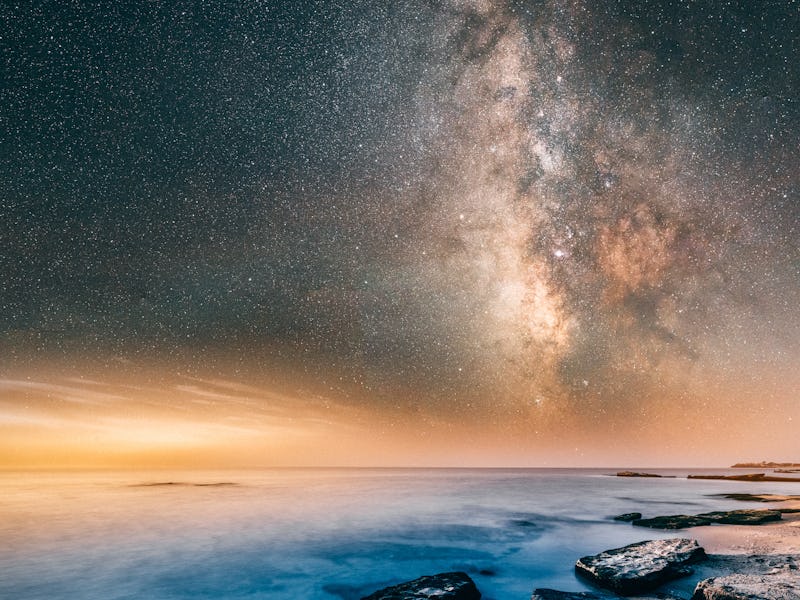Why astronomers want to build a telescope even bigger than James Webb
In the Decadal Survey 2020 report, astronomers set out their wish list for the next 10 years.

What’s on the astronomy community’s wishlist for the next decade? A big (6-meter), pricey ($11 billion) space telescope that looks a lot like the upcoming James Webb Space Telescope, but would see more visible light and launch in the 2040s. For starters anyway.
The “infrared/optical/ultraviolet (IR/O/UV) space telescope” was the top, but just one of many recommendations published Thursday in a report from the National Academies of Sciences, Engineering, and Medicine.
Known as the Decadal Survey, every 10 years a panel of astronomers surveys their field and scientific community and lays out strategic science and development goals for the next 10 years. The astronomy community recommended the James Webb Space Telescope in the 2000 Decadal Survey, and recommended what would become the Nancy Grace Roman Space Telescope in 2010.
The 2020 Decadal Survey report — its release was delayed a year due to the global SARS-CoV-2 outbreak — makes recommendations for space and ground-based observatories and programs with an eye toward keeping up a steady stream of affordable, mid-range projects, in addition to flagship missions like the IR/O/UV space telescope.
The consortium targeted their recommendations to follow up on some of the biggest discoveries in astronomy and astrophysics in recent years, including exoplanets, dark energy, and the origins of the universe, questions that “have the potential to profoundly change the way that human beings view our place in the universe,” in the language of the report.
What are the Decadal Survey 2020 recommendations?
There are recommendations on a wide swatch of astronomy projects and practices in the more than 700-page Decadal Survey report, but the recommendations for major scientific instruments fall into two basic categories: space-based and ground-based.
For space-based instruments, the report recommends NASA begin a process of science and technology “maturation” to develop:
- A large, 6-meter aperture space telescope for viewing in infrared, optical, and ultraviolet spectrums, estimated to cost $11 billion and expected to launch in the 2040s.
- Two small space telescopes focusing on the far-infrared and X-ray spectrums, with “implementation costs in the $3 billion to $5 billion range,” with planning to begin five years after NASA begins developing the 6-meter (IR/O/UV) space telescope.
Among the recommendations for ground-based instruments, the report recommends:
- A $1.8 billion National Science Foundation investment in both the Giant Magellan Telescope under construction in Chile and the Thirty Meter Telescope planned for either Hawaii or the Canary Islands.
- Planning to replace the Karl Jansky Very Large Array (JVLA) and Very Long Baseline Array (VLBA) radio astronomy observatories with a Next Generation Very Large Array, a long-term project with an estimated cost of $3.2 billion.
The report also makes a number of recommendations for midscale science programs, such as support for a next-generation neutrino detection observatory at the south pole and the cancellation, by 2023, of the Stratospheric Observatory for Infrared Astronomy, or SOFIA, an infrared telescope housed in a Boeing 747 for conducting air-based astronomy.
A render of the under-construction Giant Magellan Telescope, a next-gen facility in Chile.
How were the Decadal Survey recommendations decided?
The consortium decided on the Decadal Survey’s recommendations based on both budget projections by agencies such as NASA and the scientific priorities identified by astronomers and astrophysicists. Those priorities were divided into three board themes:
- “Worlds and suns in context,” science building on scientists’ understanding of exoplanets and stars to better understand how they form and evolve.
- “New Messengers and New Physics,” focusing on dark energy, gravitational waves, and the most energetic processes in the universe.
- “Cosmic ecosystems,” linking the molding of stars and galaxies with the forces that form them and guide their evolution.
The biggest recommended projects, such as the (IR/O/UV) space telescope, the Giant Magellan Telescope, and the controversial Thirty Meter Telescope, would address important questions across all three areas.
Why are the Decadal Survey recommendations important?
Big astronomy projects are not impromptu affairs. They take a lot of time and resources to plan, build, fly and maintain, as the people working on the often delayed James Webb Space Telescope, first recommended two decades ago can attest.
By assessing the state of astronomy every decade and making guiding recommendations, the Decadal Survey attempts to both support scientists in their present researcher and ensure new capabilities are being developed to further their ability to understand the cosmos.
This article was originally published on